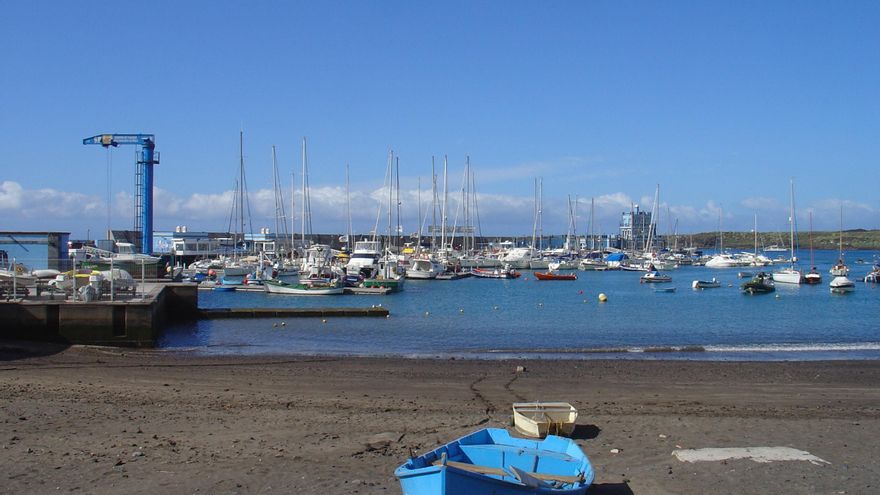Temperature Rise Expected with Dust and Strong Winds
The Government of the Canary Islands has urged the public to follow self-protection recommendations due to weather forecasts indicating the arrival of a warm, dry air mass to the archipelago. This will lead to rising temperatures, the presence of airborne dust, increased wind gusts, and poor sea conditions.
In light of these conditions, the General Directorate of Emergencies has declared a pre-alert situation for wind affecting various areas across all the islands. Additionally, a pre-alert for coastal phenomena has been activated for the western islands and Gran Canaria, effective from 18:00 on Sunday, 14 September.
Wind and Sea Conditions
The wind alert will affect El Hierro, La Palma (Mazo, Fuencaliente, El Paso, Garafía, and elevated areas of Puntagorda and Tijarafe); La Gomera (Vallehermoso, Valle Gran Rey, Alajeró, and San Sebastián de La Gomera); Tenerife (Macizo de Teno, Santiago del Teide, Granadilla, Arico, Fasnia, Güímar, Arafo, Candelaria, El Rosario, La Laguna, and Santa Cruz de Tenerife); Gran Canaria (Gáldar, Agaete, Artenara, Tejeda, the coast of La Aldea, and the coastline of Santa Lucía de Tirajana, Agüimes, Ingenio, and Telde); Fuerteventura (Pájara, Tuineje, Betancuria, and the western half of Puerto del Rosario); and Lanzarote (Yaiza, Teguise, Arrecife, and the west coast of Haría).
The deterioration in sea conditions will impact the coastlines of Garafía, Fuencaliente, and Mazo in La Palma; the west and southeast coasts of El Hierro; the northwest and southeast of La Gomera; the coast from Buenavista del Norte to Candelaria extending to San Miguel de Abona in southeastern Tenerife; and the coastlines of Gáldar, Agaete, Artenara, La Aldea, Santa Lucía de Tirajana, Agüimes, Ingenio in Gran Canaria, as well as offshore areas between the more prominent islands.
Fire Risk and Weather Warnings
Additionally, a forest fire alert will be activated in Gran Canaria from Monday, 15 September, for areas above 400 metres altitude, beginning at 10:00. A pre-alert for maximum temperatures will also be in effect across mid-altitude regions in the north, summit areas, and the eastern, southern, and western slopes of the island from 11:00.
This pre-alert regarding forest fire risk will remain in effect for the western islands.
These measures have been taken based on information provided by the State Meteorological Agency and other available sources, in accordance with the Special Civil Protection and Emergency Response Plan for Forest Fires in the Canary Islands (INFOCA) and the Specific Emergency Plan for Adverse Meteorological Phenomena (PEFMA).
The weather forecast predicts moderate to strong north-easterly winds, with gusts potentially reaching or exceeding 50 to 70 kilometres per hour.
At sea, winds will blow from the northeast at force 6 to 7 (39 to 61 kilometres per hour), with possible strong and very strong gusts (50 to 70 kilometres per hour). Additionally, strong swells and a northerly swell of 1 to 2 metres will be present, alongside combined wave conditions that may reach or exceed 2 to 2.5 metres.
The heatwave in Gran Canaria will also affect forested areas, with expected maximum temperatures likely to reach or exceed 30 to 34°C. Furthermore, the temperature inversion will occur at altitudes below 600 metres, while relative humidity will be 30% or lower above approximately 700 to 800 metres. All this will be accompanied by airborne dust.
Self-Protection Recommendations
Given these circumstances, the Government of the Canary Islands advises the public to take all necessary precautions to minimise risks and prevent accidents.
To prevent wildfires, it is vital not to discard lit cigarettes, matches, or waste in wooded areas. Furthermore, fireworks, firecrackers, or any flaming devices should not be used in high-risk areas, including open fields, agricultural lands, or developments surrounded by forests.
It is also essential to adhere to any restrictions imposed by local councils, whether pertaining to access to forested areas or work that should not be carried out in these areas until the risk situation passes.
Regarding rising temperatures, physical exercise should be avoided during the hottest parts of the day. Instead, staying in cool places, staying hydrated, and protecting oneself from the sun outdoors is advisable. Light, regular meals are recommended, along with avoiding alcohol consumption.
Due to strong winds and potential obstacles, whether travelling by vehicle or on foot, it is essential to exercise caution for possible obstructions, such as tree branches or urban furniture, and avoid walking through gardens or wooded areas.
At coastal areas, it is crucial to avoid standing on docks or breakwaters and to keep a safe distance from the sea to prevent being struck or dragged by waves. Moreover, it is advisable to postpone nautical or sports activities and to refrain from swimming in remote or unsupervised beaches.














